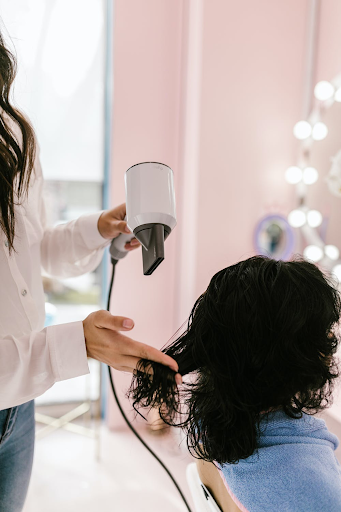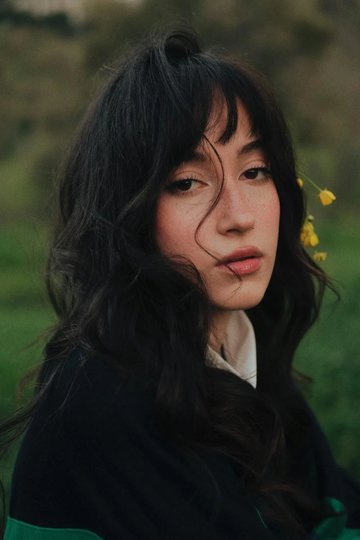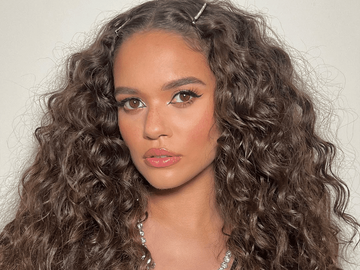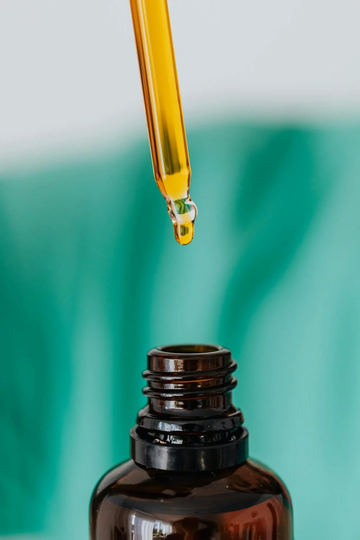How to care for your locks based on your hair texture
Hair texture is always a taboo topic. We never like what we’re given, and always want what we don’t have—unfortunately, it’s the way the cookie crumbles. Our ethos is all about the intricacies of texture and how each strand tells a unique story.
From the colors it’s seen, products you’ve used, or those noughties curling irons that were fire hazards in itself—your hair remembers what it’s been through (talk about dramatic?).
Have you ever wondered why your best friend’s voluminous curls seem to blow along in the breeze like a 90s supermodel, while your sleek strands resist every attempt at a wave and stick to your face? It's all in the texture! We love wash-cycle longevity and amazing styles, but you can’t achieve those things without truly healthy hair.
One size certainly does not fit all in the world of locks. Whether your mane cascades in a wave, bounces with curls, or oozes a sleek straightness, understanding your hair type is the key to unlocking its true potential.
We're here to demystify the intricacies of hair texture, debunk the myths, and guide you through the tailored care your strands deserve and demand. Because after all, haircare is a ritual you can’t afford to skimp out on.
What is my hair texture?
Ever sat and wondered why your hair seems to have a personality of its own? Well, it's all in the texture.
Hair texture goes far beyond the surface, delving into the intricacies that make each strand distinctive. And, though we aren’t going to solve some of life's greatest challenges, we’ll help with one menial task that’s on our minds daily—our hair.
We hope this helps when you’re standing on the beauty aisle puzzled about what hair care products to pick out––because we’re going to break it all down for you. Let’s explain where you fall when it comes to finding your texture.
Texture is more than just a touch-and-feel experience—it influences how your hair responds to styling, products, and overall care. We’ve all been there and thought, ‘why doesn't the airwrap curl your hair?’
Besides products, it can be that your hair has a texture that may not lift. From fine, or medium, to thick and coarse, here’s our list to help you identify and embrace the unique nature of your strands.
P.S. Neither one or the other of these textures is better than the other. It’s all about caring for what’s right for you—and keeping your hair safe from harm.
Fine hair texture
- Characteristics: Fine hair strands are smaller in diameter, often giving a silky and delicate appearance. Though you may not like it feeling flatter, we can guarantee that those with thicker hair are dying for the luxury of having it thin and silky.
- Feel: If you can barely feel a strand between your fingertips, you likely have fine hair. It can feel super silky, or dry and knotty—more often than not, thin hair is the hair that jams the hairbrush, so the leave-in-conditioner is your savior!
- Styling tip: Fine hair is prone to oiliness, so opt for lightweight products to avoid weighing it down. If you’re looking for some volume, we recommend a lighter extension to give your thinner hair less pull—try a set of light volume extensions, they’re bomb.
Medium hair texture
- Characteristics: Medium-textured hair falls between fine and thick, striking a balance in diameter. It’s the middle ground, and usually, when people struggle in the hair care aisle, it’s because they’re more of a medium type of gal or guy.
- Feel: You can easily feel the strand, but it's not overly coarse or too delicate.
- Styling tip: Medium hair holds styles well and is versatile, making it suitable for various looks. Why not try a pin curl using a set of 90s blow-out rollers—but always remember to use a moisture repair serum first!
Thick hair texture
- Characteristics: Thick hair boasts a larger diameter, giving a voluminous and robust appearance—but it can differ between being dry or coarse.
- Feel: Strands are easily felt and may be dense, providing a fuller look.
- Styling tip: Use more substantial styling products, as thick hair can handle and often requires more moisture. Beware to not overheat, as sometimes you can’t tell that you’re inflicting heat damage. Try out this heat protector—it’s a saving grace for hair.
Identifying your hair texture sets the foundation for tailoring your care routine to meet its specific needs. Now, armed with the knowledge of your hair's category, you can start personalizing your routine so that you can make the most out of your look.

Understanding the diversity of hair: what’s my hair type?
You’ve heard it before, but we’ll say it again—your hair type is as unique as your fingerprint. Each strand is engrained with what it craves to prosper. The more damage that is inflicted, the more care that it will demand.
We’re going to explain the intricate, scientific details of different hair types, from straight to coily to help you really pinpoint which area you fit into.
Straight hair
|
Type 1A |
Type 1B |
Type 1C |
|
Very straight and fine, common for those of Asian descent. |
Thicker than 1A, still very straight, with medium texture and more volume. |
Very thick and coarse, maintaining the straight and shiny characteristics, making curls challenging to hold. |
Wavy hair
|
Type 2A |
Type 2B |
Type 2C |
|
Wavy with fine or thin texture, featuring S-shaped waves that are easy to style. |
Medium-thick waves, prone to frizz, offering a balance between straight and curly. |
Thick, coarse, and wavy, often challenging to style due to frizz. |
Curly hair
|
Type 3A |
Type 3B |
Type 3C |
|
Shiny, thick, and defined curls, prone to frizz. |
Combining different textures, with tighter curls presents a unique challenge. |
Characterized by very tight curls or kinks, often overlooked but distinctive in its texture. |
Coily hair
|
Type 4A |
Type 4B |
Type 4C |
|
Soft with tight and well-defined curls. |
Soft and fragile, featuring very tight and less defined curls. |
Exhibits such tight curls that it may not initially appear curly, often sensitive, and easily damaged. |
Debunking the blow-dry myth
The age-old debate on ‘does blow drying your hair damage it’ has left many hair enthusiasts puzzled. This dilemma has been spoken about in every hairdresser and every glossy magazine—but what really is the rule?
Some of us are daily washers, and some are once weekly. Truth is, there may be no rule, but how are we supposed to dry our hair?
For the record, any form of heat will always damage your hair. So the myth that towel drying is actually worse, is just a myth. A 2011 study published in the Annals of Dermatology did mention that not using hair dryers will result in a “relatively well-protected hair surface,”—so you do the math.
Picture this, you’ve soaked in a candlelit tub with your facemask on, then dried off and put on your new silk pajamas—perfection, right? Why would we want to ruin the feng shui when you can towel dry your hair and let it dry au natural? Sitting for half an hour with the hair dryer will dampen the mood. We get it.
We’ve broken down the myth to explain that when done right, you can do both.
Is air-drying your hair better?
Scientific insight
- A common belief suggests that allowing hair to air-dry is inherently gentler, minimizing the potential damage associated with heat.
- Research published in the Journal of Cosmetic Science challenges this assumption. The study emphasizes that the prolonged exposure of wet hair to external factors, like environmental humidity, can lead to swelling of the hair shaft, resulting in structural damage. So, in essence, we recommend not leaving the house—who would want to anyway?
TYME’s nurturing approach
- While air-drying has its merits, especially for specific hair types, it's crucial to strike a balance. Consider towel-drying your hair gently to remove excess moisture before air-drying. You could also opt for a special hair towel that minimizes breakage and keeps your locks split-end-free.
- If opting for air-drying, use products designed to protect hair from environmental factors. Leave-in conditioners with UV protection can be beneficial to achieve glossy, smooth hair.
How to blow-dry your hair?
Scientific insight
- Proper blow-drying techniques, along with the use of heat protectants, can help minimize damage. A study in the International Journal of Trichology channels the importance of temperature control during the blow-drying process.
- The research suggests maintaining an optimal distance between the hair and the blow dryer, which we recommend 6 inches away, combined with the use of a diffuser attachment.
TYME’s nurturing approach
- Invest in a quality blow dryer with adjustable heat settings. Low or medium heat levels are often sufficient for effective drying without excessive damage. We rarely use the hot setting unless your hair is super thick and slathered in treatment.
- Apply a heat protectant before blow-drying to create a barrier between the hair and the heat. Remember, no thermal stress is less hair stress!

Air drying tips
At TYME, our commitment is to prioritize hair health above all. While we adore achieving wash-cycle longevity and curating picture-perfect styles, the foundation of it all lies in the health of your hair.
Let's explore some tips to enhance your hair's well-being while embracing the simplicity of air-drying, offering a break from the blow dryer.
1. Gentle towel drying
After washing, blot your hair gently with a microfiber towel. Avoid rubbing vigorously, as this can lead to frizz and damage.
2. Choose the right products
Select hair care products like the mega bundle that caters to your specific hair type. Hydrating serums, leave-in conditioners, and styling products can enhance your hair's natural texture without the need for excessive heat.
We recommend you keep up to date with all of the Lauren Ashtyn collection, the team are constantly in the lab creating the perfect products to treat your tresses.
3. Detangle with care
Use a wide-tooth comb or your fingers to detangle damp hair gently. Starting from the tips and working your way up can prevent breakage and minimize stress on your strands.
4. Be patient
Allow your hair to air-dry naturally whenever possible. If time allows, avoid rushing the process to let your locks dry at their own pace.
5. TYME’s expert tips
Explore our expert tips for air-drying hair in our blog covering what to look for when air-drying and the secrets to achieving optimal results.
By embracing air-drying and prioritizing the health of your hair, you not only enhance its natural beauty but also contribute to long-term strength and resilience.
How often should you wash your hair?
Scientific insight
- The frequency of hair washing depends on various factors, including hair type, scalp health, and individual preferences. A study in the International Journal of Trichology highlights the importance of personalizing your washing routine.
- Overwashing can strip the scalp of natural oils, leading to dryness and increased oil production as a compensatory mechanism.
TYME’s approach
- Listen to your hair. If you have a drier texture, you may not need to wash it as frequently. Those with oilier hair may benefit from more regular washing.
- Use sulfate-free shampoos to maintain a healthy balance. Incorporate dry shampoo between washes to manage oiliness without overwashing—that’s our top tip!
When you’re figuring out the air dry or blow-dry debacle, understanding the science behind it won’t always direct your decision. We know that there are days you’ll wake up and crave a fresh blowout with a clean head of hair, and that’s okay, too.
Tailor your approach based on your hair type, preferences, and lifestyle, ensuring that your hair care routine aligns with both science and self-care—and always do what feels right for you.
Listen to your hair and always do what’s best for you
We hope you’ve managed to pinpoint where you fit in the wheel of hair textures. Everyone is different, and all hair needs personalized treatment to get the best out of it. From fine strands that crave lightweight care and less washing to thick locks yearning for substantial moisture, remember: there's no one-size-fits-all approach when it comes to hair care.
There’s plenty of myths doing the rounds on socials and our advice is: don’t always listen to it. Whether you choose to embrace air-drying simplicity or indulge in a carefully executed blow-dry, prioritize the health of your hair above all.
At TYME we champion the #1 topic: hair health. Textured hair needs love and care, and we funnel that into everything we do. Our commitment extends beyond achieving stunning styles; it's about fostering what you already have, and making it work.
May you have strong luscious hair, and style it however you please—we’re all unique and that’s what makes hair super exciting.





